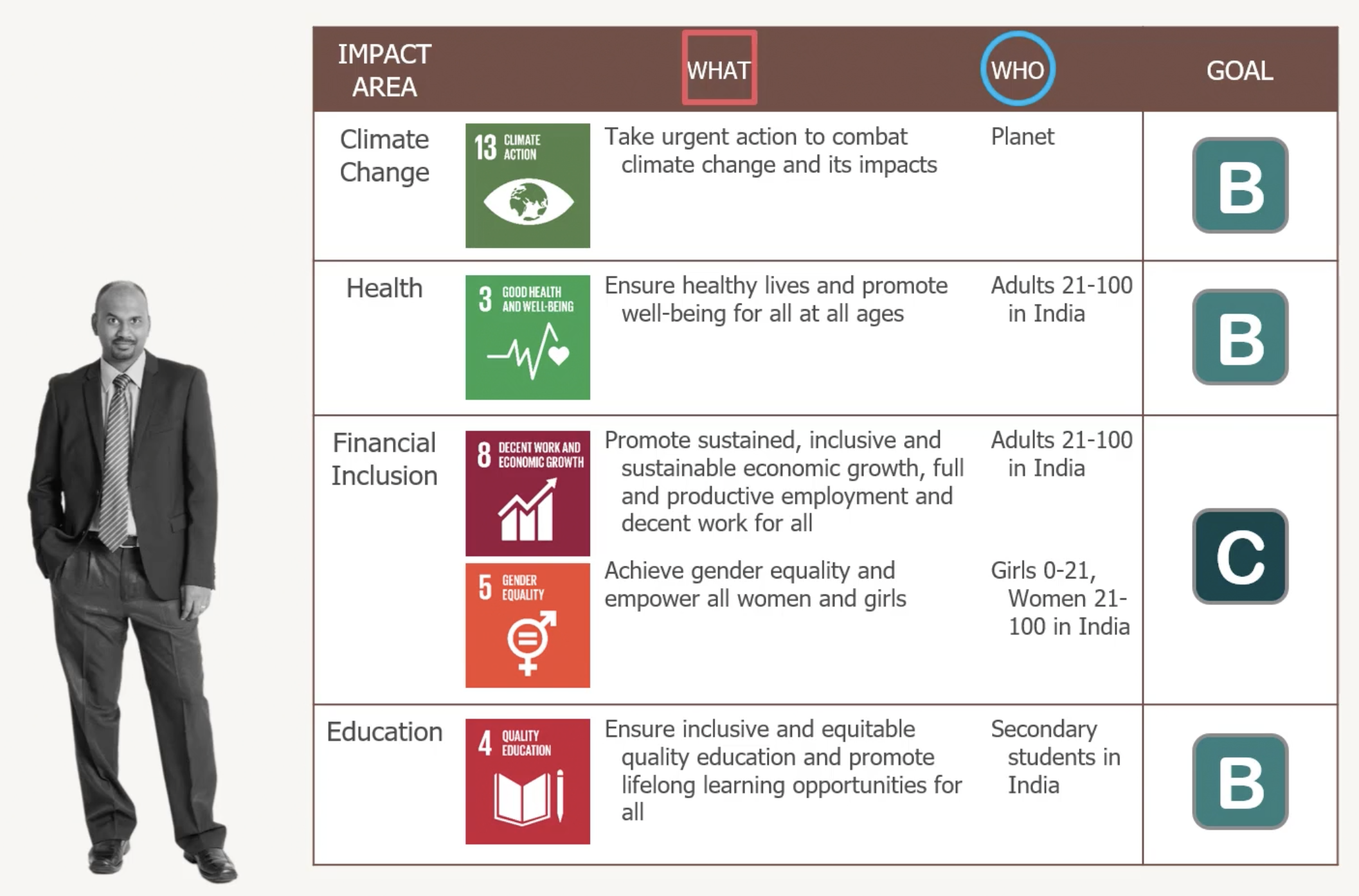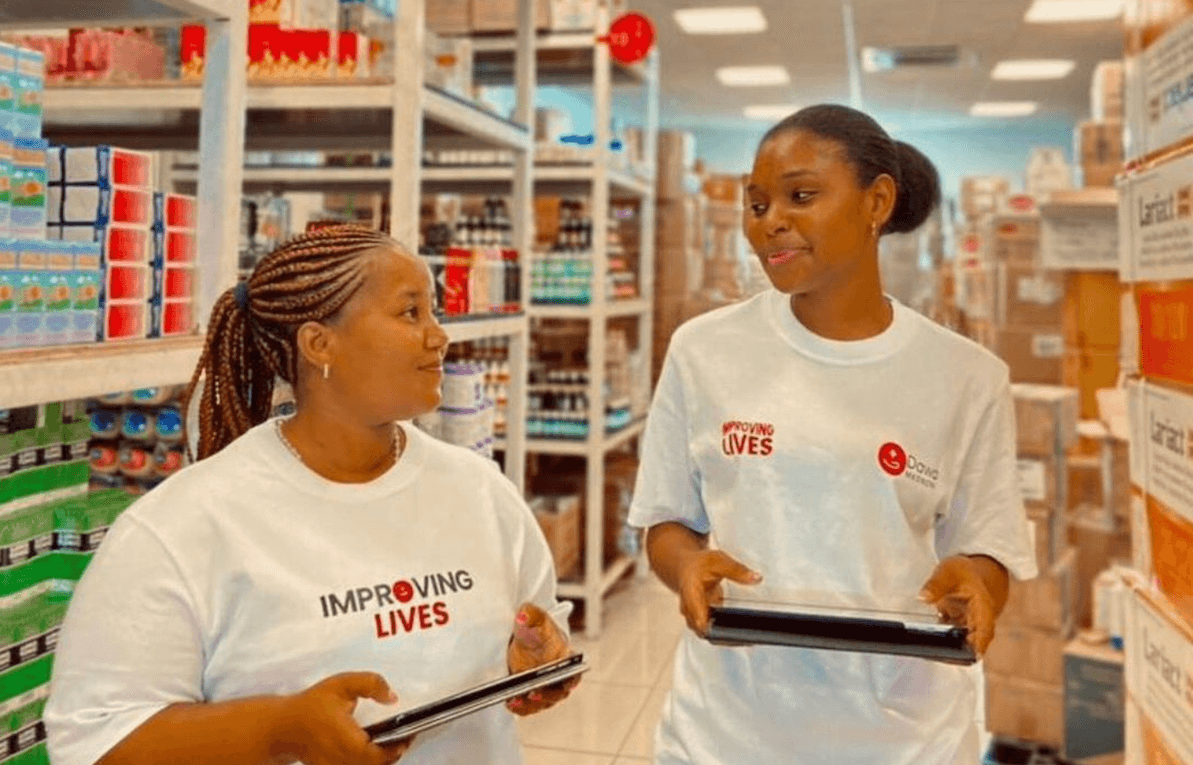
Optimizing for Impact. Want to learn more about Optimizing Impact for the Sustainable Development Goals? Over the next few weeks, ImpactAlpha will offer a sampling of Cathy Clark’s favorite videos from the Coursera course, “Impact Measurement and Management for the SDGs,” developed by CASE at Duke and the U.N. Development Program – with commentary from Cathy.
WHY I LIKE IT: Many people may already be familiar with the ABC levels from the Impact Management Project (A –investments that avoid harm, B – those that benefit stakeholders, and C – investments that contribute to solutions). For the course, we wanted to simplify and visualize them in some sticky way so investors and enterprises could more easily remember what differentiates these three kinds of goals.
The graphics in this video were the result of many conversations with the team at the Impact Management Project over the fall of 2020. Our discussion elevated the idea of incorporating a visual threshold to the descriptions of the goal levels to better explain the distinction between them. We emerged quite pleased with the result and we shared our core visuals and explanations last year with several groups, most notably the Impact Classification System, which has since become “powered” by the GIIN. Ben Thornley and I also worked together last year on how to talk about thresholds based on his experiences with some of Tideline’s clients.
In short, it took months of meetings to get to this 17 minute video that we think helps make the ABCs easier to grasp. We’ve already had learners in the course tell us this concept of a threshold related to ABC goal levels was a revelation for them. We hope this video helps clarify your understanding as well!
HOW TO USE IT: In a perfect world, enterprises would be setting their own ABC goal levels for individual Sustainable Development Goals and other outcomes. But in the real world, investors need to be familiar with these goals and then help their investees understand the different goal levels they are working towards and the implications for measuring and managing those outcomes. Investors will manage investments differently depending on goal level.
Investors that use the ABC goal levels find it easier to a) decide what data to ask of investees by goal level and b) decide later if an investment is meeting its target. Ultimately, as part of the Optimize step, investors should go back and update their goal levels based on the actual impact performance of their investment. I believe that as more investors use the goal levels, impact performance will be easier to communicate up and down the investment value chain. And of course, the ABCs are roughly aligned with the new sustainable finance disclosure requirements in Europe.
COMMON MISTAKES: The most common issue with the ABCs is assuming that all of your impact must be C level because you believe it to be very impactful. But it requires more data to justify a C level, and you may simply not want to (or be able to) invest the time and energy to collect the data required to justify C-level outcomes for every investment. Another common mistake is being embarrassed to have A goals, or mostly A goals. As we discussed with the SDG Impact team, if more large companies could significantly reduce their negative impact on the SDGs, we’d likely need fewer C-level investments! And the reality is that most companies are currently in the unrated, unanalyzed “may cause harm” category, so moving to an A goal to reduce harm is significant.
Ready to dig into the full training?
- Sign up free on Coursera for Impact Measurement and Management for the SDGs.
- Enter the Optimizing Impact Challenge – the first 100 people who post their course completion certificate on LinkedIn will receive a small gift from CASE as well as a mention by ImpactAlpha. Send an email to [email protected] with your LinkedIn profile or proof of completion certificate to enter.
- View prior posts in this series and the recap and replay of The Call: Optimizing for Impact.











